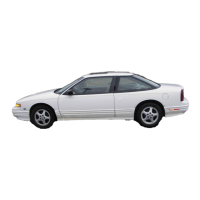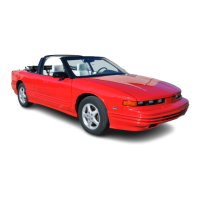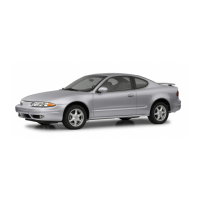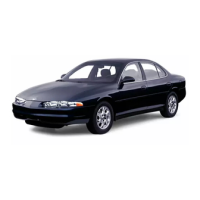Experienced driver or beginner, each of us is subject to
the same laws of physics when driving on curves. The
traction of the tires against the road surface makes it
possible for the vehicle to change its path when you turn
the front wheels. If there’s no traction, inertia will keep
the vehicle going in the same direction. If you’ve ever
tried to steer a vehicle on wet ice, you’ll understand this.
The traction you can get
in
a curve depends on the
condition
of
your tires and the road surface, the angle at
which
the
curve is banked, and
your
speed.
While you’re
in a curve, speed is the one factor you can control.
Suppose you’re steering through a sharp curve. Then you
suddenly accelerate. Both control systems
--
steering and
acceleration
--
have to do their work where the tires meet
the road. Adding the sudden acceleration can demand too
much of those places. You can lose control.
What should you do if this ever happens? Ease up on the
accelerator pedal, steer the vehicle the way
you
want
it
to go, and slow down.
Speed limit signs near curves warn that you should
adjust your speed. Of course, the posted speeds are
based on good weather and road conditions. Under less
favorable conditions you’ll want
to
go slower.
If
you need to reduce your speed
as
you approach a
curve, do it before you enter the curve, while your front
wheels are straight ahead.
Try
to adjust your speed
so
you can “drive” through the
curve. Maintain a reasonable, steady speed. Wait to
accelerate until you are out of the curve, and then
accelerate gently into the straightaway.
Steering
in
Emergencies
There
are
times when steering can be more effective than
braking. For example, you come over a hill and find a
truck stopped in your lane, or a car suddenly pulls out
from
nowhere, or a child
darts
out from between parked
cars and stops right
in
front of you. You can avoid these
problems by braking
--
if
you can stop in time. But
sometimes you can’t; there isn’t room. That’s the time for
evasive action
--
steering around the problem.
Your Oldsmobile can perform very well in emergencies
like these. First apply your brakes. (See “Braking in
Emergencies” earlierin this section.) It is better to
remove as much speed as you can from a possible
collision. Then ste.er around the problem, to the left or
right depending on the space available.
4-9

